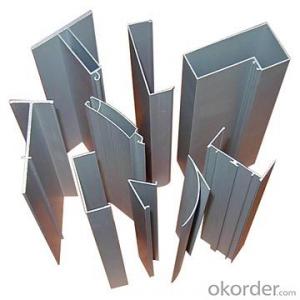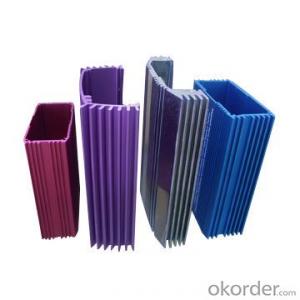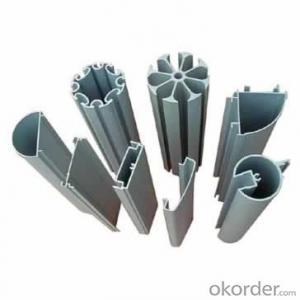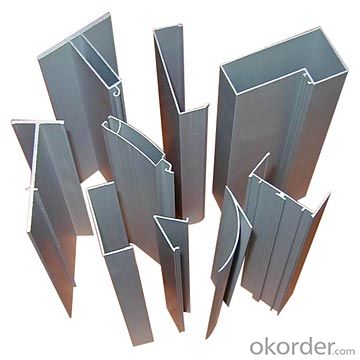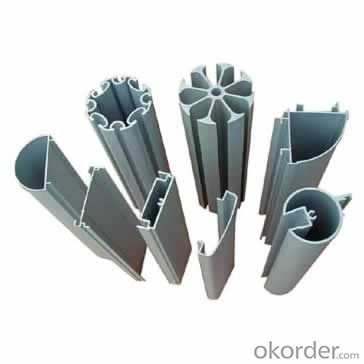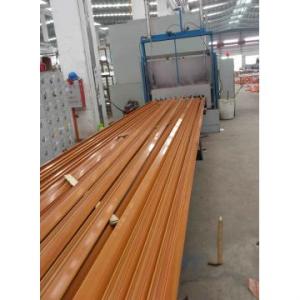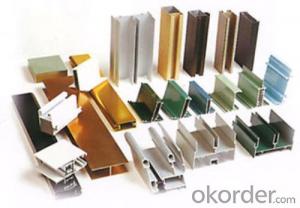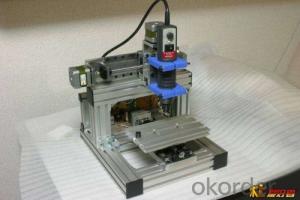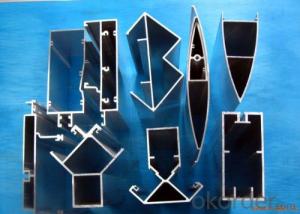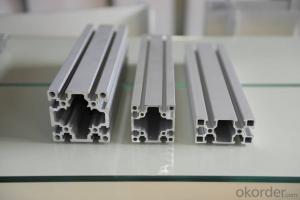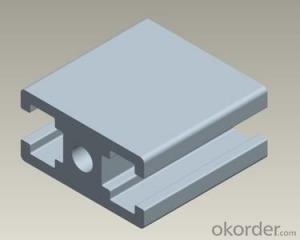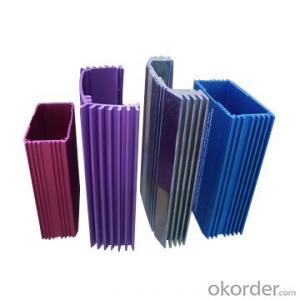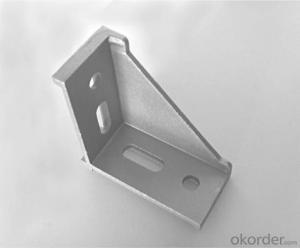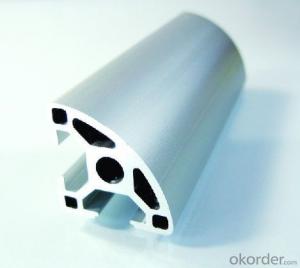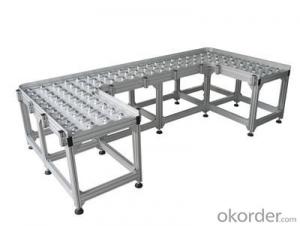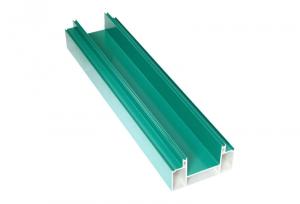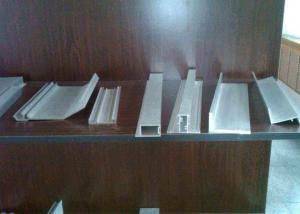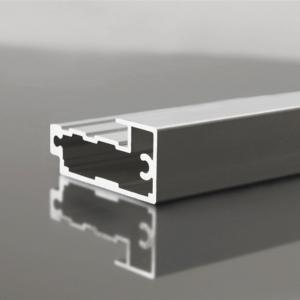Alloy 6063 T5 Extruded Frame Aluminum Profiles
- Loading Port:
- China Main Port
- Payment Terms:
- TT OR LC
- Min Order Qty:
- -
- Supply Capability:
- -
OKorder Service Pledge
Quality Product, Order Online Tracking, Timely Delivery
OKorder Financial Service
Credit Rating, Credit Services, Credit Purchasing
You Might Also Like
Material | Alloy 6063,6061,6005or according to customer’s choice |
Temper | T3, T4, T5, T6 |
Surface | Anodize, electrophoresis, powder coating, PVDF coating, wood grain painting, matted, etc. |
Color | Any colour based on Standard Germany RAL Mark |
Length | Coating 6.5 meters, Anodizing 6.5 meters, Mill finish 5 meters |
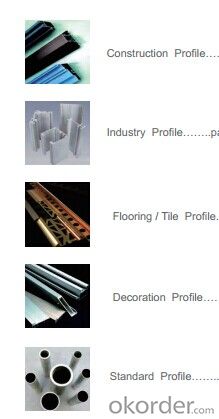
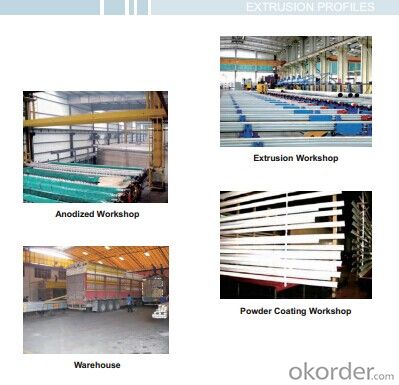

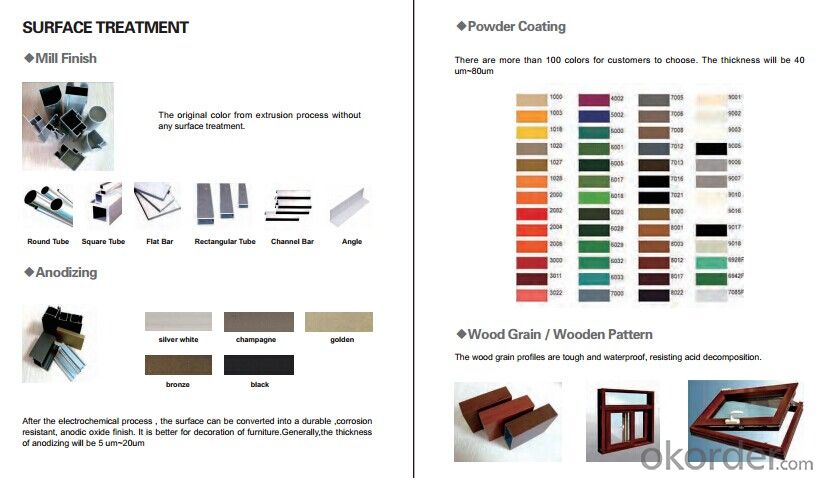
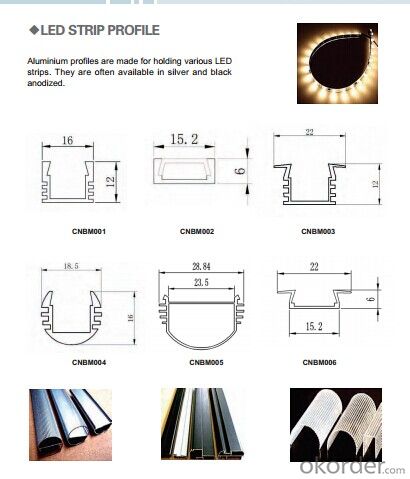
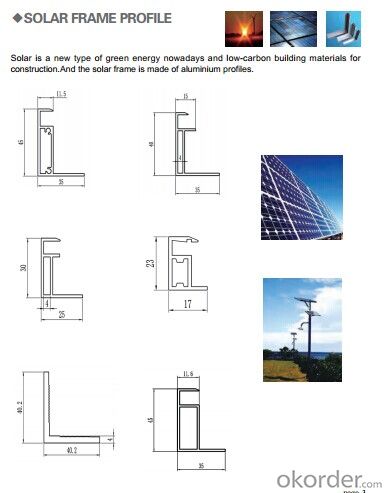
- Q: What are the methods to reduce waste from aluminum profiles in construction?
- <p>To minimize waste generated from using aluminum profiles in building construction, consider the following strategies: 1) Accurate planning and design to reduce offcuts. 2) Utilize modular designs to maximize material usage. 3) Implement recycling programs to repurpose leftover profiles. 4) Opt for suppliers that provide aluminum profiles cut to exact specifications. 5) Educate workers on proper handling and waste reduction techniques. 6) Use digital tools for precise cutting to minimize material waste. 7) Encourage the use of aluminum due to its high recyclability and low energy consumption in the recycling process.</p>
- Q: Aluminum blackening formula
- Anodic oxidation of aluminum is aluminum or Aluminum Alloy anode to lead as cathode in sulfuric acid, oxalic acid, chromic acid and aqueous solution electrolysis, so that the surface oxide film. The anodic oxidation process is most widely used. Aluminum and Aluminum Alloy sulfuric acid anodizing oxidation film has high adsorption capacity, easy sealing alone or with colored more to improve the corrosion resistance of anodic oxide film thickness and appearance. The process is generally Aluminum Alloy sulfuric acid anodizing electrolyte has the advantages of simple operation, stable, cost is not high, the process is mature, but in sulfuric acid anodized process often unavoidable failure occurred, influence of oxide film quality. The following detailed analysis about the failure reasons, then give some preventive measures for your reference:Common faults and analysisAluminum Alloy products by sulfuric acid anodic oxidation, partial oxidation without touch, showing visible black spots or stripes, film drums or holes. The failure phenomenon of tumor is rare but has occurred.Dr. al website has detailed knowledge
- Q: Are aluminum profiles recyclable and can they be used again in flooring applications?
- <p>Yes, aluminum profiles can be recycled and reused in flooring applications. Aluminum is a highly recyclable material, with recycling processes that retain its properties without loss in quality. This makes it an environmentally friendly choice for flooring as it reduces waste and conserves resources. Recycled aluminum can be used to create new profiles for flooring systems, maintaining strength and durability while offering a sustainable solution.</p>
- Q: Explain how aluminum profiles contribute to the energy efficiency of a building.
- <p>Aluminum profiles significantly enhance the energy efficiency of a building through several mechanisms. They are lightweight yet strong, reducing the overall weight of the structure and the energy required for construction. Their excellent thermal conductivity allows for efficient heat transfer, which can be managed with proper insulation to reduce heat loss. Aluminum profiles also facilitate better window and door sealing, minimizing drafts and heat leakage. Additionally, their high reflectivity can help in reflecting solar heat, reducing the need for cooling. Lastly, aluminum profiles can be used in the construction of solar panels and other renewable energy systems, further contributing to a building's energy efficiency.</p>
- Q: What are the various energy-saving characteristics that can be incorporated into aluminum profiles?
- <p>Aluminum profiles can incorporate several energy-saving features to enhance thermal insulation and reduce energy consumption. These include: 1. Thermal breaks: Inserts that reduce heat transfer between the interior and exterior of a profile. 2. Multi-chamber designs: Multiple air chambers within the profile that act as insulators. 3. Low-E coatings: Reflective coatings that reduce heat transfer. 4. Insulating glass units: Double or triple glazed units with gas fills that provide superior insulation. 5. Passive solar design: Profiles designed to maximize heat gain in winter and minimize it in summer. 6. High-performance seals: Gaskets and seals that minimize air infiltration. 7. Aerodynamic shapes: Profiles that reduce air resistance and heat loss. These features can significantly contribute to energy efficiency in buildings.</p>
- Q: How do aluminum profiles perform in wind-resistant structures?
- Aluminum profiles are known for their excellent performance in wind-resistant structures. Due to their inherent strength and durability, they are able to withstand high wind pressures and maintain structural integrity. The lightweight nature of aluminum makes it an ideal material for constructing wind-resistant structures as it reduces the overall load on the building without compromising its strength. Aluminum profiles have high tensile strength and are resistant to corrosion, making them suitable for withstanding harsh weather conditions, including strong winds. They also have a high stiffness-to-weight ratio, meaning they can effectively distribute the wind load and minimize deflection. This characteristic is essential in wind-resistant structures as it helps to prevent excessive movement and ensures the safety of the building and its occupants. Furthermore, aluminum profiles can be easily fabricated and customized, allowing for the creation of complex and innovative designs. This flexibility in design enables architects and engineers to optimize the aerodynamics of the structure, further enhancing its resistance to wind forces. Additionally, aluminum profiles can be combined with other materials, such as glass or composite panels, to create a more robust and efficient wind-resistant system. Overall, aluminum profiles are highly reliable and efficient in wind-resistant structures. Their strength, lightweight nature, corrosion resistance, and flexibility in design make them an excellent choice for constructing buildings that can withstand strong winds and ensure the safety and longevity of the structure.
- Q: This question asks for the method to determine the amount of aluminum required for a construction project.
- <p>To calculate the weight of aluminum profiles needed for a building project, follow these steps: 1. Determine the length and cross-sectional area of each aluminum profile required. 2. Use the aluminum density, which is approximately 2.7 grams per cubic centimeter (g/cm鲁). 3. Multiply the volume (length 脳 cross-sectional area) by the density to get the weight of each profile. 4. Sum the weights of all profiles to get the total weight needed. Ensure to account for any additional material for joints, connections, and potential waste. It's also advisable to consult with an engineer or use specialized software for precise calculations tailored to your project's specific requirements.</p>
- Q: What is the relationship between aluminum alloy and aluminum alloy?
- Aluminum profile is an applied product form of aluminum alloyThe aluminum profile is the aluminum bar through the hot melt, the extrusion, thus obtains the different section shape aluminum material. The aluminum profile production process mainly includes the casting, the extrusion and the colored three processes
- Q: How do aluminum profiles contribute to the reduction of carbon footprint?
- Due to their environmental benefits, aluminum profiles play a crucial role in reducing carbon footprints. To begin with, aluminum is a highly recyclable material, with nearly 75% of all aluminum ever produced still in use today. This recyclability greatly diminishes the necessity for extracting and refining new aluminum, which is an energy-intensive process that contributes to carbon emissions. Furthermore, the lightweight characteristic of aluminum profiles offers numerous advantages in terms of transportation and energy consumption. In comparison to materials like steel, aluminum is significantly lighter, resulting in reduced fuel consumption during transportation. This not only decreases carbon emissions but also lowers the overall energy required for logistics. Moreover, aluminum profiles are widely utilized in the construction industry, where they make a significant contribution to the energy efficiency of buildings. Aluminum's exceptional thermal conductivity allows for the creation of highly efficient windows, doors, and facades, which prevent heat transfer and reduce the need for excessive heating or cooling. By enhancing the energy efficiency of buildings, aluminum profiles aid in minimizing energy consumption and subsequently decreasing carbon emissions. Additionally, aluminum profiles have a long lifespan and require minimal maintenance, reducing the need for frequent replacement. This durability helps conserve resources and lowers the carbon emissions associated with the production and disposal of alternative materials. All in all, the utilization of aluminum profiles in various industries significantly contributes to the reduction of carbon footprints. Its recyclability, lightweight nature, energy efficiency, and durability all make aluminum a sustainable choice with a positive impact on the environment.
- Q: Can aluminum profiles be used in material handling equipment manufacturing?
- Yes, aluminum profiles can be used in material handling equipment manufacturing. Aluminum profiles are lightweight, durable, and have excellent strength-to-weight ratio, making them suitable for constructing various components such as frames, supports, and conveyors in material handling equipment. Additionally, aluminum profiles offer versatility in terms of customization and can be easily assembled, making them a popular choice in this industry.
Send your message to us
Alloy 6063 T5 Extruded Frame Aluminum Profiles
- Loading Port:
- China Main Port
- Payment Terms:
- TT OR LC
- Min Order Qty:
- -
- Supply Capability:
- -
OKorder Service Pledge
Quality Product, Order Online Tracking, Timely Delivery
OKorder Financial Service
Credit Rating, Credit Services, Credit Purchasing
Similar products
Hot products
Hot Searches
Related keywords
